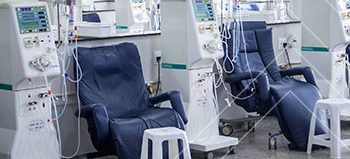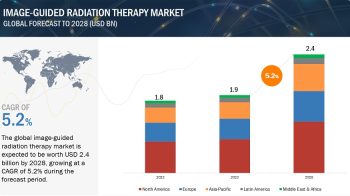Revenue Growth Expectations:
The global air quality monitoring system market is valued at USD 4.4 billion in 2021 and is expected to reach USD 5.9 billion by 2026, at a CAGR of 6.5% during the forecast period.
Major Growth Boosting Factors:
The growth of this market is majorly driven by factors such as rising levels of air pollution, supportive government regulations for effective air pollution monitoring and control, and ongoing initiatives toward the development of environment-friendly industries. Adding to this, increasing public-private funding for effective air pollution monitoring, and the increasing public awareness related to the environmental and healthcare implications of air pollution also supports the growth of this market.
Overview:
This study involved the extensive use of both primary and secondary sources. The research process involved the study of various factors affecting the industry to identify the segmentation types, industry trends, key players, competitive landscape, fundamental market dynamics, and key player strategies.
Download PDF Brochure@
https://www.marketsandmarkets.com/pdfdownloadNew.asp?id=183784537
The stack monitoring segment is expected to register the highest growth in the forecast period
The global air quality monitoring systems market is segmented on the basis of sampling method into active/continuous, intermittent, passive, manual, and stack monitoring.
The active/continuous monitoring segment commanded the largest share of the global air quality monitoring systems market in 2020, whereas the stack monitoring segment is projected to grow at the highest CAGR during the forecast period. Stack monitoring is the continuous measurement of air pollutants (such as gas or particulate matter) from industrial facilities. It is used to monitor air quality around waste incinerators, cement plants, and other industrial sources that need to comply with emission standards for hazardous air pollutants (HAPs) and volatile organic compounds (VOCs).
The fixed indoor monitors subsegment of indoor monitors holds the largest market share in 2020
Based on type of products, the global air quality monitoring systems market is segmented into indoor monitors, outdoor monitors, and wearables.
The indoor air quality monitors market is further segmented into fixed monitors and portable monitors.
The fixed indoor monitors is expected to account for the largest share of the indoor monitors market in 2020, primarily due to the growing need to maintain controlled indoor environment and monitor the level of atmospheric gases and air pollutants inside facilities like manufacturing units, laboratories, and storage area, among others, particularly in industries like pharmaceutical industries, biotechnology and microbiology industries, food and beverages industries, cosmetic industries, etc.
Government agencies and academic institutes were the key end-users in the air quality monitoring systems market
Based on end user, the air quality monitoring systems market is segmented into government agencies and academic institutes, commercial and residential users, petrochemical industry, power generation plants, pharmaceutical industry, smart city authorities, and other end users.
Government agencies and academic institutes commanded the largest share of the global air quality monitoring systems market in 2020. The demand of air quality monitoring devices among government agencies and academic institutions is driven by active government initiatives for effective air quality monitoring, increased number of research collaborations, and increased installation of AQM stations worldwide.
Asia Pacific is expected to see the highest growth in the air quality monitoring systems market by region
The global air quality monitoring systems market is segmented into five major regions, namely, North America, Europe, the Asia Pacific, Latin America, and the Middle East & Africa. North America is the largest regional market for air quality monitoring products, whereas the Asia Pacific market is estimated to grow at the highest CAGR during the forecast period.
Countries in this market are witnessing growth in their GDPs and a significant rise in disposable income among the middle-class population. These developments have led to increased government spending by various regional governments, modernization of industrial and public infrastructures, and rising penetration of cutting-edge environmental monitoring technologies (especially in rural areas).
Request Sample Pages@
https://www.marketsandmarkets.com/requestsampleNew.asp?id=183784537
Key Players:
As of 2020, the air quality monitoring systems market was dominated by Thermo Fisher Scientific (US), 3M (US), Siemens (Germany), Teledyne Technologies (US), General Electric (US), Emerson Electric Company (US), Honeywell International Inc (US), HORIBA, Ltd. (Japan), Merck KGaA (Germany), and TSI Incorporated (US), among others.


